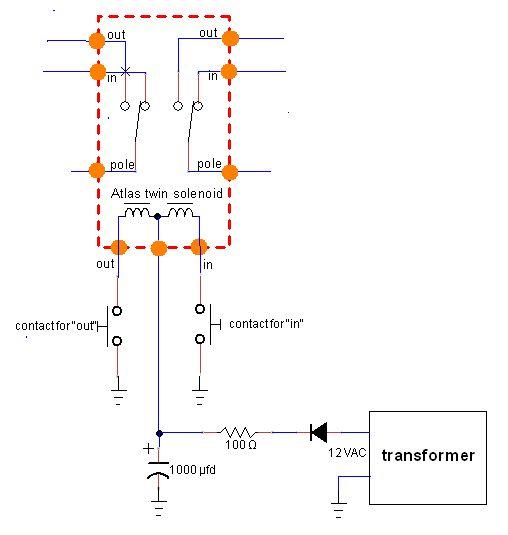Okay: Here is a tough question. It involves the Atlas Snap Relay. For those who may be unfamiliar with a snap relay, what it does in a conventional control system is select the "block" of track it is wired to be powered by either transformer "A" or "B". Many people attach an Atlas snap relay to an Atlas turnout machine and as the turnout is activated by the operator pressing a button--the snap relay is also activated. Hooking these two together reduces one step in what an operator has to do to get a train to pass through a block.
My brilliant idea was to do this on my conventionally powered "O" scale layout. In fact, I had the most brilliant idea of all and that was to attach the Atlas Snap Relay to my DZ1000 turnout machine EXCEPT in my "O" scale version I have my turnouts wired for non-derailing. That meant when the non-derailing feature is activated by a train my block would automatically be selected without me physically touching anything! Brilliant huh? EXCEPT...
Here is my problem, unlike the vast majority of HO, and N, where the wheels on the cars are 99% plastic, my "O" scale train wheels are all metal. That means that every single set of wheels activates the snap relay and the snap relay overheats and burns up--destroyed. I tried using resistors to minimize the power to the snap relay. That doesn't work. It still overheats with multiple sets of metal wheels passing over the trigger for the non-derailing function/snap relay.
Does anyone have a suggestion of what and how to wire some type of time delay electrical component so that when the non-derailing feature trips the snap relay there is like a thirty second delay before the snap relay may be activated again?






